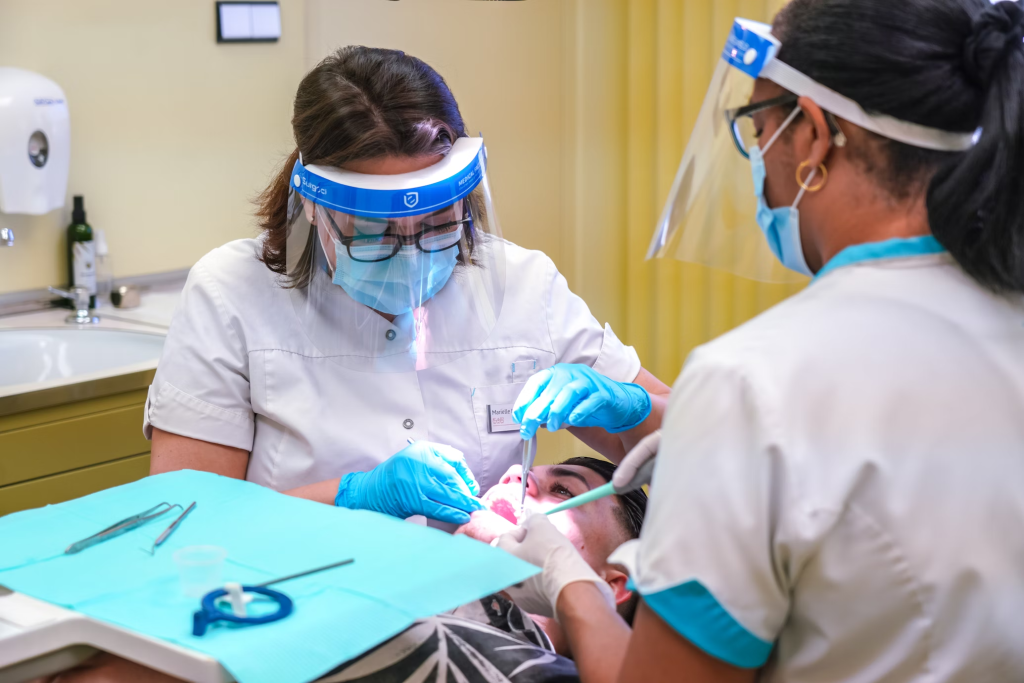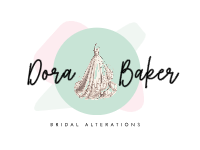Maintaining proper oral hygiene is essential for overall health, and it begins with knowing how to effectively clean your mouth. Many people understand the basic principles of brushing and flossing, but cleaning your mouth goes beyond these basic steps.

In this comprehensive guide, we’ll break down the proper way to clean your mouth, offering clear and easy-to-follow instructions for good oral health. Whether you’re aiming to prevent cavities, avoid gum disease, or simply freshen your breath, understanding the full process of mouth cleaning is crucial.
Click the Article For More Details
Tips For Properly Clean Your Mouth
The Importance Of Cleaning Your Mouth
Cleaning your mouth isn’t just about having fresh breath or a sparkling smile; it’s also about keeping harmful bacteria in check. The mouth is a gateway to your body, and poor oral hygiene can lead to a host of health problems, including:
- Cavities: These occur when plaque and bacteria break down the enamel on your teeth, leading to decay.
- Gum Disease: Plaque build-up can cause gum inflammation, which can develop into gingivitis or more severe periodontal disease.
- Bad Breath: A build-up of bacteria in your mouth can cause persistent bad breath (halitosis).
- Systemic Health Issues: Poor oral health has been linked to other serious conditions, including heart disease, diabetes, and respiratory problems.
Properly cleaning your mouth goes a long way in preventing these issues, promoting healthy teeth and gums, and enhancing your overall well-being.
Brushing Your Teeth: The Foundation Of Oral Hygiene
Brushing your teeth is the first and most important step in cleaning your mouth. Australian Dental Association (ADA) recommends brushing your teeth twice a day – in the morning and before bed – using fluoride toothpaste. Here’s how to do it correctly:
- Choose the Right Toothbrush: Use a toothbrush with soft bristles to avoid damaging your gums and enamel. Whether you prefer a manual or electric toothbrush is up to you, but electric toothbrushes often provide a more consistent brushing experience.
- Correct Brushing Technique: Hold your toothbrush at a 45-degree angle to your gums. Brush the outer and inner surfaces of each tooth, as well as the chewing surfaces. Use gentle, circular motions rather than a scrubbing action, as aggressive brushing can lead to gum recession and enamel wear.
- Brushing Duration: Brush for at least two minutes to ensure that all surfaces are properly cleaned. You can divide your mouth into quadrants and brush each for 30 seconds. Pay special attention to the gum line, where plaque tends to accumulate.
- Brushing the Tongue: Don’t forget to gently brush your tongue with your toothbrush. Your tongue harbours bacteria, which can contribute to bad breath and oral health problems.
- Fluoride Toothpaste: Fluoride toothpaste is highly effective in strengthening tooth enamel and preventing cavities. It helps to fight tooth decay by remineralising the enamel and reducing plaque build-up.
Flossing: Reaching The Hard-To-Reach Areas
While brushing removes plaque and food particles from the surfaces of your teeth, flossing is necessary to clean between your teeth and along the gum line, areas that a toothbrush often misses. The Australian Dental Association (ADA) recommends flossing once a day to keep your gums healthy and prevent cavities.
- Correct Flossing Technique: Take a piece of dental floss about 18 inches long and wind most of it around your middle fingers, leaving a small section taut between your thumbs and forefingers. Gently slide the floss between your teeth, curving it into a C shape around each tooth. Be sure to floss beneath the gumline and use a clean section of floss for each tooth to prevent transferring bacteria.
- Flossing Alternatives: If you have difficulty using traditional floss, consider alternatives like floss picks, interdental brushes, or water flossers. These can be particularly helpful for people with braces, dental appliances, or limited dexterity.
Using Mouthwash: Rinsing For Added Protection
Mouthwash can help with cleaning your mouth by reducing bacteria, refreshing your breath, and offering additional protection against plaque and gingivitis. It’s important to choose the right mouthwash to complement your brushing and flossing routine.
- Choosing the Right Mouthwash: There are various types of mouthwashes available, including those that help fight bacteria, freshen breath, and protect against cavities. If you’re concerned about gum disease, choose a mouthwash with antibacterial properties. If you’re prone to cavities, look for one with fluoride to strengthen enamel.
- When to Use Mouthwash: Mouthwash should be used after brushing and flossing, not as a replacement for these steps. Swish the mouthwash around your mouth for 30 seconds to one minute, making sure it reaches every corner of your mouth, including between your teeth and along the gum line.
Cleaning Your Gums: Maintaining Healthy Gum Tissue
Healthy gums are essential to good oral hygiene. Gum disease is a common issue that can lead to tooth loss if not properly managed. While brushing and flossing help keep your gums clean, there are additional steps you can take to promote gum health.
- Gentle Brushing Along the Gum Line: When brushing, always focus on cleaning the area where your teeth meet your gums. Plaque tends to accumulate in this region, and failing to clean it properly can lead to gum inflammation and bleeding.
- Massage Your Gums: Gently massaging your gums with your toothbrush or with your finger can improve circulation and promote healthy gum tissue.
- Rinse with Saltwater: A saltwater rinse can be soothing for inflamed gums. Mix a teaspoon of salt in warm water and swish it around your mouth for 30 seconds. This can help reduce gum swelling and promote healing.
Hydrate To Keep Your Mouth Clean
Water is a crucial component of oral health. It helps rinse away food particles, reduces acidity in your mouth, and stimulates saliva production, which naturally protects your teeth and gums. Saliva helps neutralise harmful acids produced by bacteria and contains enzymes that aid in the digestion of food particles.
- Drink Fluoridated Water: In Australia, many areas have fluoridated tap water, which helps strengthen your teeth and prevent decay. Drinking water throughout the day helps wash away food particles and keeps your mouth hydrated.
- Limit Sugary Beverages: Sugary drinks, including soft drinks, fruit juices, and energy drinks, can contribute to tooth decay. Bacteria in the mouth feed on sugars and produce acids that erode enamel. When consuming sugary drinks, try to sip them slowly and rinse your mouth with water afterwards.
Eating A Mouth-Healthy Diet
Your diet plays a significant role in the health of your teeth and gums. Eating a balanced diet full of essential vitamins and minerals helps support strong teeth and gums. Certain foods are particularly beneficial for maintaining oral health.
- Calcium-Rich Foods: Dairy products, leafy greens, and fortified non-dairy alternatives are excellent sources of calcium, which is essential for strong teeth and bones. Calcium helps to fortify enamel and keep your teeth from weakening.
- Vitamin C: Vitamin C is essential for gum health. Citrus fruits, strawberries, bell peppers, and leafy greens provide high levels of this vitamin, which helps your body produce collagen to maintain gum tissue.
- Crunchy Fruits and Vegetables: Foods like apples, carrots, and celery help to scrub your teeth naturally as you chew. They also stimulate saliva production, which helps neutralise acids and wash away food particles.
Quit Smoking And Limit Alcohol Consumption
Smoking is one of the leading causes of gum disease and bad breath. It reduces blood flow to your gums, making it harder for your body to fight off infections. Smoking also weakens your immune system and increases your risk of developing oral cancers.
- Quit Smoking: Quitting smoking is one of the best things you can do for your oral health. If you need assistance, speak with your doctor about the resources available to help you quit.
- Limit Alcohol: Excessive alcohol consumption can contribute to dry mouth and an increased risk of gum disease. Alcohol can also wear down the enamel, leading to tooth sensitivity. Drink alcohol in moderation, and remember to drink water to stay hydrated.
Visit Your Dentist Regularly
Regular visits to your dentist are essential for maintaining a clean mouth. Your dentist will perform a professional cleaning, remove plaque and tartar that has built up, and check for any signs of dental issues. It’s recommended to visit your dentist every six months for a routine check-up and cleaning.
- Early Detection of Problems: A dentist can identify dental issues such as cavities, gum disease, or early signs of oral cancer. Catching these problems early allows for more effective and less expensive treatments.
- Dental Cleanings: Even with diligent home care, plaque and tartar can build up in areas that are difficult to clean on your own. A dentist or hygienist will perform a professional cleaning to remove this build-up, helping to prevent gum disease and tooth decay.
Conclusion
Cleaning your mouth effectively is an essential part of maintaining good oral hygiene and overall health. It involves not only brushing and flossing but also using mouthwash, hydrating, eating a balanced diet, and maintaining regular dental visits.
Incorporating these practices into your daily routine will help protect your teeth and gums from decay, gum disease, and other oral health issues. By taking proper care of your mouth, you’re ensuring a healthier smile and promoting your overall well-being.
Frequently Ask Question
Should I Clean My Mouth After Every Meal?
It’s not always necessary to clean your mouth after every meal, but it is helpful, especially after eating sugary or acidic foods. Brushing or rinsing with water can remove food particles and reduce the risk of plaque build-up. However, if you’ve eaten acidic foods like citrus fruits or tomatoes, it’s best to wait at least 30 minutes before brushing. This allows your enamel to remineralise and avoid damaging the tooth surface. If brushing is not possible, rinsing with water can help freshen your mouth and reduce acidity.
How Can I Prevent Dry Mouth While Cleaning My Teeth?
To prevent dry mouth while cleaning your teeth, make sure to stay hydrated by drinking plenty of water throughout the day. Dry mouth can occur when your saliva production decreases, which can be caused by medications, dehydration, or certain health conditions. Using fluoride toothpaste and mouthwash can help protect your teeth while chewing sugar-free gum may stimulate saliva production. If dry mouth persists, it’s a good idea to consult your dentist for recommendations on how to manage the condition.
How Long Should I Brush My Teeth?
You should brush your teeth for at least two minutes to ensure that all areas of your mouth are thoroughly cleaned. The two-minute duration allows for adequate time to clean each tooth surface, including the front, back, and chewing surfaces, as well as along the gumline. To make sure you’re brushing for the right amount of time, you can use a toothbrush with a built-in timer or set a timer on your phone. Brushing for this duration twice a day will help maintain good oral health and prevent common dental problems.
